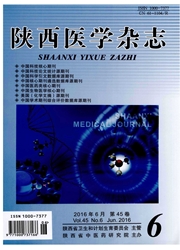

 中文摘要:
中文摘要:
目的:体外培养人肝癌组织伴生成纤维细胞,观察其生长状态,为进一步研究其功能奠定基础.方法:应用组织块培养法进行人肝癌伴生成纤维细胞的原代培养,细胞铺满培养瓶底后首次传代,通过胰酶消化法和反复贴壁法进行成纤维细胞的纯化;通过倒置显微镜观察细胞形态、免疫组织化学方法检测细胞膜波形蛋白(vimentin)、角蛋白(keratin)表达情况,对细胞进行鉴定.结果:组织块法原代培养约1周可见纤维样细胞从组织块周围游出,5周左右细胞基本长满培养瓶底.首次传代时应用胰酶消化法进行成纤维细胞的初次纯化,第2次转种时先后应用酶消化法和反复贴壁法再次进行细胞纯化,第3代以后基本可获得呈典型克隆性生长、长梭形纤维样细胞,生长周期短.免疫组化染色结果为vimentin染色阳性,keratin染色阴性.结论:在体外成功培养了人肝癌组织伴生成纤维细胞,并对其生物学性状进行了初步探讨,为进一步研究其与肝癌细胞生长、浸润及转移的关系等机制奠定了基础.
 英文摘要:
英文摘要:
Objective: To explore in vitro culture of fibroblasts companymg human hepatoma and observe the cell growth. Methods: The fibroblasts companying human hepatoma were primarily cultured with explant culture method, first passaged after they spread to the bottom of the culture bottle, and pured by enzyme digestion and repeated strapping;the cells were identificated through observing the morphologic change using invert microscope and detecting expression of vimentin, keratin by immunohistochemical method. Results: Visible fiber like cells emigrated from tissue after 1 week of culture and covered the bottle bottom at about 5th week. The first passage cells were initially pured by enzyme digestion, then pured by enzyme digestion and repeated strapping alternatively in the second course of transferation and inoculation, the third period cultured cells showed typical clonali growth and were long fusiform fibroid cells with short growth cycle. Vimentin positive reaction and keratin negative reaction were get by immunohistochemical staining. Conclusion: We hare successfully cultured fibroblasts of human cancer .
 同期刊论文项目
同期刊论文项目
 同项目期刊论文
同项目期刊论文
 期刊信息
期刊信息
